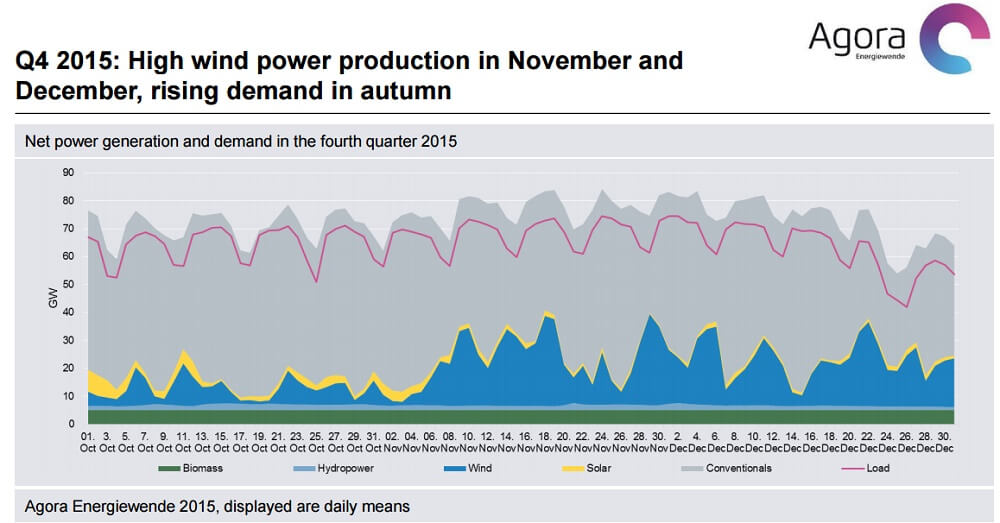Tim Buckley, Director of Energy Finance Studies, IEEFA, Australasia.
The German think tank Agora Energiewende recently published a powerful message on how a major economy (the sixth-largest electricity market in the world) is transforming its energy markets without massive economic disruption. In its 51-page “State of Affairs 2015” report, Agora forecasts record low wholesale electricity prices continuing into 2018 at least. Consumers will start to see gains in terms of a gradual and permanent decline in retail electricity prices over the next five to ten years as the near-term peak of subsidies passes.
One upshot: Countries such as India and China get all the benefits without the costs of the sort of expensive public subsidization that Germany imposed on itself to kick-start the transition. The broad effect is to drive down the cost of new technologies globally.
Here’s the Agora list:
- Renewable energy: 2015 was a year of superlatives. Wind energy saw record growth of 50%, renewables were by far the dominant energy source with a 30% share of production. They now cover 32.5% of power consumption.
- Power usage: Electricity usage rose slightly in 2015 due to weather conditions compared to 2014, while the economy grew by 1.7%. However, the decoupling of power usage and growth is not happening fast enough: While the federal government’s energy concept envisions a decline in power usage of 10% by 2020 over 2008, usage was only down 3.4% in 2015.
- Conventional energy: Nuclear and gas power plants produced somewhat less power than in the previous year, electricity from lignite and hard coal remained nearly constant. Because renewables are covering ever more of the domestic power needs, German coal power is being increasingly exported.
- Climate protection: The CO2 balance of the power sector hardly changed compared to the previous year. Total greenhouse gas emissions in Germany even rose slightly and were 26% below those of 1990 in 2015. It is thus becoming more and more difficult for Germany to reach its 2020 climate targets.
- Power exports: Power exports rose considerably in 2015. Physical power flows reached an all-time high at 50 terawatt-hours on balance. This was on balance around eight% of all power production. Measured by trade flows, net exports amounted to around 61 terawatt-hours, 50% more than in the previous year. The Netherlands, Austria and France are the main power importers from Germany. The reason: Germany has the second-lowest market power price in Europe after Scandinavia.
- Power prices: Market power prices fell again in 2015. They were around 31.60 euros per megawatt-hour. On the futures market, prices decreased even further: In the second half of 2015, power for the years 2016 and 2017 traded at less than 30 €/MWh.
- Flexibility: There was a mixed picture of the flexibility of the power system in 2015. While the number of hours with negative power prices nearly doubled to around 126 (2014: 64 hours), the average negative power price sank to around 9 €/MWh (2014: -€15.55 Record days: On 23 August, the share of renewables reached its highest level: Between 1pm and 2pm, 83.2% of all power demand were covered by renewables. The litmus test for the power system came on 20 March, during the partial eclipse of the sun: The power system dealt extremely well with the sharp fluctuations in nationwide solar power production.
- Popular sentiment: A large majority of the population supports the energy transition: 90% of all citizens consider the Energiewende as “important” or “very important”. Solar (85%) and wind (77%) power are the most popular choices to be the main pillar of the energy system, while only 5% of the population favour nuclear and coal power.
- Outlook 2016: In production, the share of nuclear energy will decline slightly, while renewables will continue to expand, due to the continued build-up in wind power plants. Despite the decline in market power prices, household power prices are likely to rise slightly due to higher levies and fees, nearing the 2014 level.
Filed Under: News, Policy




